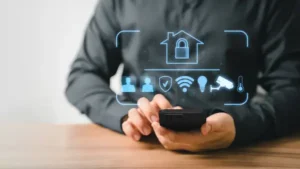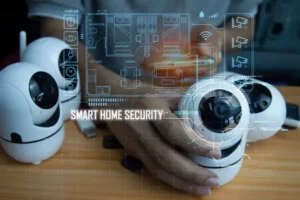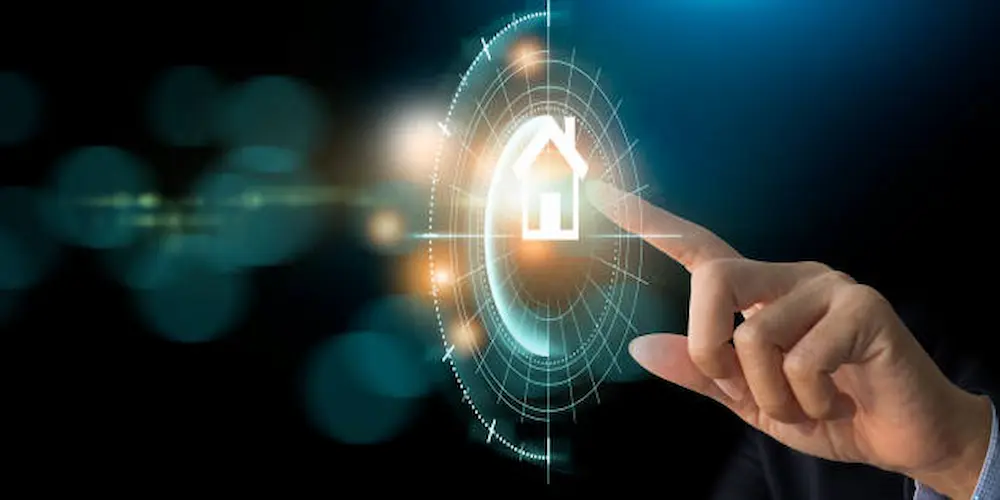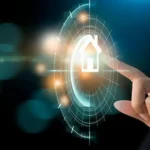Technology has transformed how we protect our homes, making comfort, control, and safety accessible like never before. Smart Security Systems bring together cameras, sensors, locks, and apps that let modern families monitor what matters most from anywhere. Gone are the days of simple alarms and keys—today’s connected devices offer real-time alerts, automated locks, and seamless integration with your daily routines. In this post, we’ll explore how these systems work, key components, benefits, and what to consider when choosing the right setup.
The Rise of Smart Security in the Digital Era
Smart Security Systems are no longer futuristic gadgets—they’re becoming essential parts of homes everywhere. As more people adopt smart home devices, security has become one of the most important uses. In cities and suburbs alike, homeowners demand solutions that integrate with their lifestyles: checking their front door from a phone, locking windows automatically, or alerting neighbors when there’s unusual activity.
Connected homes are also evolving to reduce energy waste and respond automatically to changes. For example, a security system might turn off lights or lock doors when the homeowner is away, saving energy while maintaining safety. In the digital era, protection isn’t just about walls—it’s about intelligent systems working together to keep homes secure, efficient, and smart.
You might be interested in: Beneficios de implementar software personalizado

How Smart Security Systems Work
Understanding how Smart Security Systems function helps you appreciate their value for modern living. At their core, these systems combine hardware and connectivity to provide seamless protection.
Sensors, cameras, and intelligent locks communicate via Wi-Fi, Bluetooth, or other wireless standards to create a network that watches over your home. These components send status updates and alerts to mobile apps, allowing remote control and monitoring. Some systems even use AI to filter out false alarms and distinguish a human from a pet.
Beyond software, physical hardware remains crucial. For instance, partnering with a trusted Roller door manufacturer ensures that automated gates and doors blend quality mechanical protection with smart functionality. The result is a safer, smarter environment that combines digital oversight with physical strength.
Key Components of a Smart Security Ecosystem
Smart Cameras and Motion Sensors
Smart cameras powered by artificial intelligence can detect unusual activity, differentiate between people, animals, or objects, and reduce false alerts. They often upload footage to the cloud, allowing you to review events from your phone or computer. Motion sensors add a layer of protection by triggering alerts before someone even approaches the house. Together, these devices form the eyes of your smart security ecosystem.
Smart Locks and Automated Access
Today’s smart locks let you lock or unlock doors via applications, voice assistants, or temporary access codes. Some systems integrate with entire access networks—not just your front door. For example, in more automated smart homes, you can pair your app-controlled locks with Roll-up doors in Long Island as an example of efficient, automated entry systems that enhance home security without sacrificing convenience. This kind of integration means that physical entry points and digital controls work together seamlessly.
Smart Alarms and Emergency Alerts
Beyond smoke or motion detection, smart alarm systems can monitor for gas leaks, fire, water intrusion, and unexpected power outages. They send alerts directly to homeowners or local authorities, making response faster. Because they’re connected, these systems can also learn your patterns—and adjust sensitivity or alert types to suit your daily habits and avoid unnecessary alarms.
Integrated Protection with Smart Barriers
While digital tools are essential, physical barriers remain key to effective security. Modern homes combine technology and structural protection—for instance, using Grille Gates to secure windows or entrances. These gates not only provide sturdiness and deterrence, but also integrate with the rest of the smart ecosystem, closing automatically at night or locking when motion is detected nearby. The combination of digital and physical protection keeps both modern and traditional threats in check.
You might be interested in: Las mejores apps para viajar y disfrutar tus vacaciones

Benefits of Smart Security Systems for Modern Homes
Smart Security Systems offer real-time control that was unimaginable a decade ago. With live monitoring from mobile apps, homeowners can check on their properties, interact with delivery personnel, or lock doors remotely—all from anywhere. The convenience alone makes smart systems popular, but the benefits go deeper.
Energy savings come from integrated automation: lights, locks, and cameras adjust when no one is home. Insurance companies often offer lower premiums when homes use verified smart security setups. Plus, homes with modern systems tend to sell for higher value, since buyers trust that protection is up to date.
Perhaps most importantly, smart systems provide digital peace of mind. The ability to monitor and control your home from anywhere—and receive actionable alerts instantly—makes it easier for families to feel safe, even when they’re not physically present.
Choosing the Right Smart Security System
Choosing a Smart Security System doesn’t have to be overwhelming. Key considerations include compatibility with your existing devices (smart assistants, Wi-Fi hubs), how user-friendly the associated app is, and whether firmware updates and privacy policies are sane.
Budget also matters: while basic DIY systems are affordable, more advanced setups with professional monitoring, backup power, and biometric access cost more—but often bring better protection. Decide whether you need automated gates, smart sensors, or just a reliable lock and camera first. Then evaluate systems that balance innovation, reliability, and simplicity for daily life.
The Future of Home Security Technology
The future of home security is smart, predictive, and personalized. Artificial intelligence continues to improve recognition of valid vs suspicious activity, making alarms more accurate and useful. Biometric access—voice, fingerprint, facial recognition—is becoming faster and safer.
Predictive threat detection will warn homeowners about potential vulnerabilities before they become real risks. As innovation accelerates, smart homes will anticipate needs—locking doors, adjusting settings, and alerting users proactively. Home security will become less about reacting and more about intelligently protecting.
Conclusion: Living Smarter, Living Safer
Smart Security Systems are not just tools for protection—they transform how we live with confidence in a connected world. By combining cameras, locks, alarms, and smart gates, modern homes become safer, more convenient, and more efficient. The smartest systems protect not only property, but also time, comfort, and peace of mind. Today’s innovation is tomorrow’s standard: living smarter means living safer with technology.



